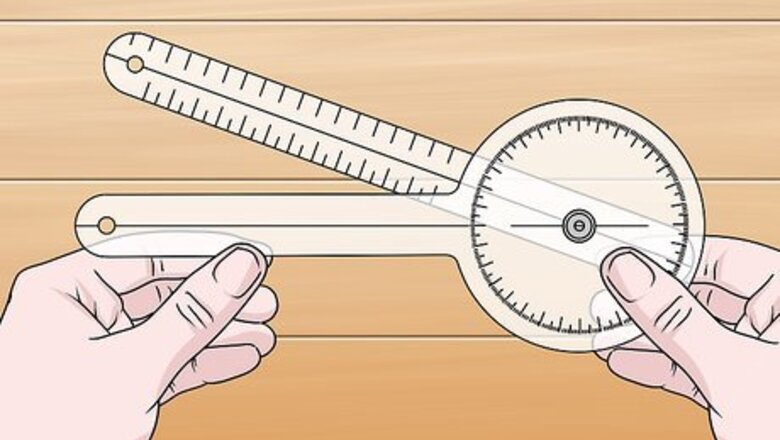
views
Aligning the Goniometer for Measurement
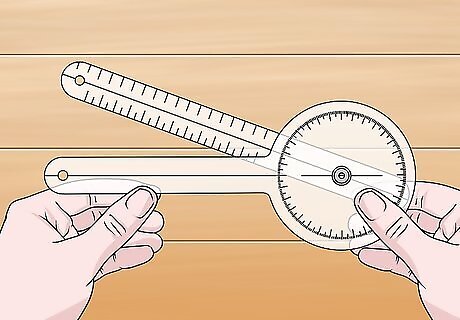
Familiarize yourself with the goniometer before using it. A goniometer has two arms: one that’s attached to the circle with the angle degrees on it, and a movable arm that does the measuring. Make sure you understand how the moving arm points to the angle degrees so that you’re able to measure the range of motion accurately. Once the moving arm of the goniometer is aligned with the moving limb, you'll look at the goniometer to see the angle degree that the moving arm is pointing to.
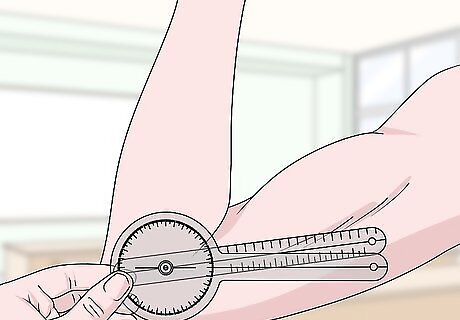
Align the center of the goniometer with the center of the joint. The center of the goniometer, also called the fulcrum, should be placed right on the fulcrum of the joint you’re measuring. The center is the round section attached to the stationary arm. Aligning the fulcrums of both the goniometer and the joint will ensure an accurate measurement. For example, if you’re measuring the hip joint, the center of the goniometer should be placed right where the hip joint is, in the center of your hip.
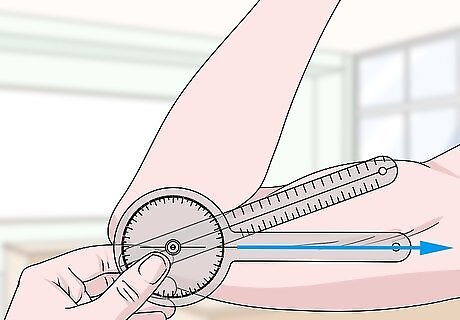
Hold the goniometer's stationary arm along the limb being measured. Once the center of the goniometer is on the joint, align the stationary arm (the arm attached to the circle) with the limb that’s going to remain in place. This is the limb that you’ll hold steady while the other limb rotates. If you were measuring your knee’s range of motion, the fulcrum of the goniometer would be on the fulcrum of your knee joint, with the stationary arm of the goniometer aligned with your thigh. If it helps, imagine you're aligning the arms of the goniometer with the bones in your body.
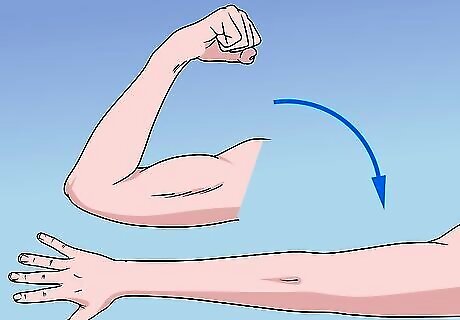
Stretch the joint through the range of motion. While holding the goniometer and stationary limb in place, move the joint as far forwards or backwards as possible. Be careful not to move any other part of your body except the limb that’s being measured. Stretch the joint as far as it will safely go, and then hold your limb in place. For example, hold your arm in place while bending your wrist forwards. The hand would be the limb that’s about to be measured, and you’d be keeping the arm stable and unmoving.
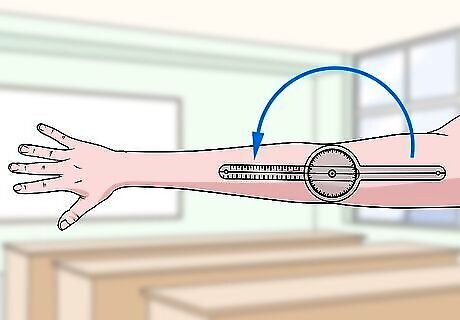
Move the moving arm of the goniometer to align with the moving limb. Once you’ve stretched your limb as far as it can go, slide the moving arm of the goniometer around so that it’s aligned with the limb that stretched. You should now have the stationary arm of the goniometer aligned with the stationary limb, and the moving arm of the goniometer aligned with the moving limb. Make sure the goniometer’s moving arm is going straight down the center of the limb that moved. The fulcrum of the goniometer should still be on the fulcrum of the joint. When properly aligned, it should look as if you used the goniometer to trace the angle of your stretch.
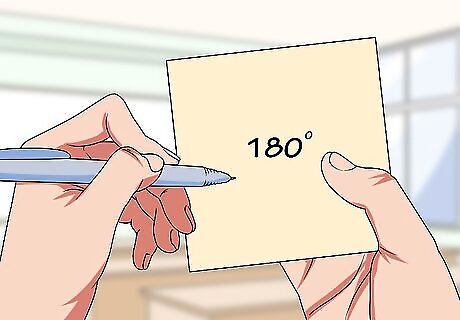
Record the angle on a piece of paper to find out the range of motion. The moving arm of the goniometer should be pointing at the angle degree on the stationary arm, telling you the range of motion. Look at the reading on the goniometer before removing it from the person’s body in case the goniometer’s arms move once it’s removed. Write down which joint you measured, what type of movement was done, and the range of motion in degrees.
Measuring Specific Joints
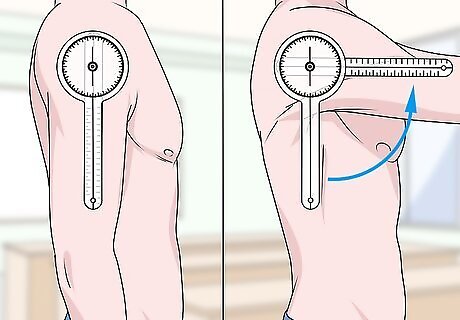
Use the goniometer to find the range of motion for a shoulder joint. To measure the lateral rotation of the shoulder, start by holding the arm straight down against the body. Move the arm slowly upwards, stretching as far as possible. Measure the angle using the goniometer. To measure the backwards flexion of the shoulder, start with the arm down by the body and move it backwards before measuring. The lateral rotation of the shoulder is the movement from the resting position (arms at your side) to the top of your body, as if you were raising your hand in the air. The average range of motion for the lateral rotation of the shoulder is 170 degrees. The backwards flexion, also known as hyper extension, is the movement of your arm starting from the resting position and moving backwards behind your body. The average range of motion for this is 50 degrees. The fulcrum of the goniometer should be on the fulcrum of the shoulder joint.
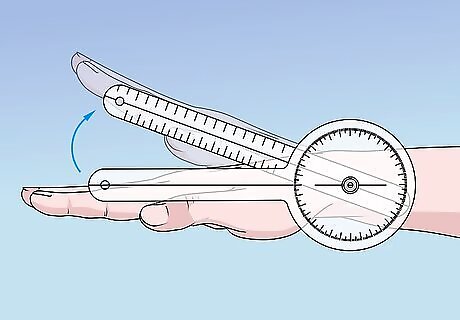
Bend the wrist forwards or backwards to find the flexion or extension. To find the wrist flexion, rest the elbow on a table with the arm sitting upright. Bend the hand forward as far as it will go while keeping the arm stable, measuring the angle by aligning the goniometer’s arms along the center of the forearm and the middle finger. To find the extension, do the same thing but bend the hand backwards instead of forwards. The fulcrum of the goniometer is on the wrist joint. Flexion requires that the goniometer be on top of the hand to measure, while extension requires the goniometer to be placed alongside the bottom of the hand and in the palm. The average flexion range of motion is 80 degrees, while extension is 70 degrees for the wrist.
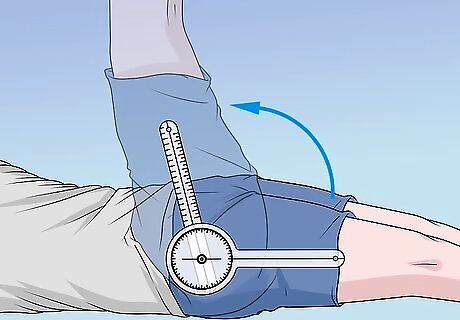
Find the flexion and extension of the hip joint using the goniometer. Have the person lay down on a flat surface on their back with their legs straight out in front of them. Flexion of the hip is the movement of one leg being brought upwards towards the body—measure this angle by placing the goniometer on the side of the hip and aligning the arms. To measure the extension, the person will lay on their stomach and move their leg backwards as far as possible. Try not to lift the hips from the floor while moving the leg for the most accurate measurement. The fulcrum of the goniometer is on the fulcrum of the hip joint, with the arms aligned on the moving leg and the waist. The average flexion for the hips is 100 degrees, while the average hyper extension is 20 degrees.
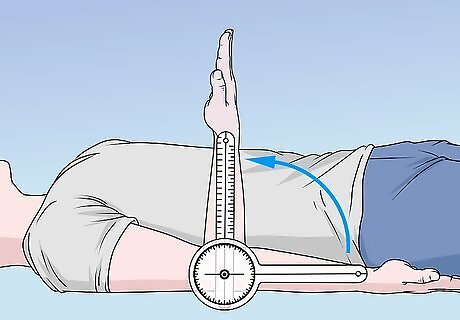
Align the goniometer with the elbow to find it’s range of motion. With the person laying down, hold the arm flat on the ground with the palm facing up. Bend the arm upwards towards the body as far as it will go, measuring the angle degree of flexion with the goniometer. To measure extension, flex the arm back down towards the table as straight as possible, ideally creating a straight line with the goniometer’s arms. The fulcrum of the goniometer is beside the elbow joint. The average flexion for the elbow is 145 degrees, while the average extension should be 0 degrees (when your arm is completely straight).
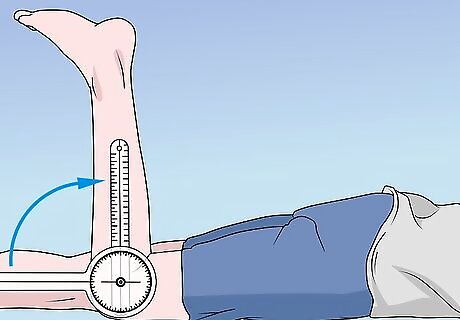
Measure the knee’s extension and flexion using the goniometer. To measure the hyper extension of the knee, have the person lay flat on their back on a stable surface with the leg extended as straight as possible. To measure flexion, the person needs to lay on their stomach, bending the knee so that their leg is pulled toward their back as far as it will go. Hold the goniometer to the side of the knee joint and align the arms on either side, with the moving arm aligned with the moving leg. The average knee extension should be 0 degrees (when your leg is in a straight line), while the average flexion is roughly 135 degrees. To align the goniometer’s arms correctly, imagine your lining up the goniometer’s arms along the bones of the leg. Keep the body stable and unmoving while the leg is bending.



















Comments
0 comment